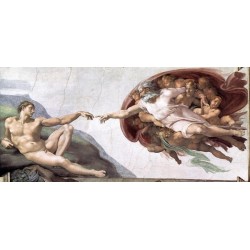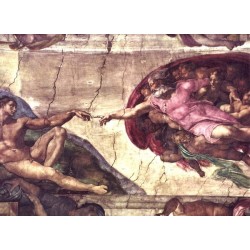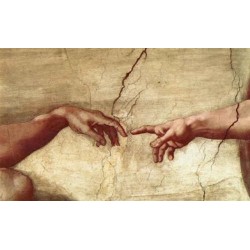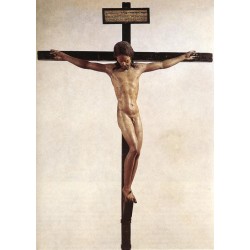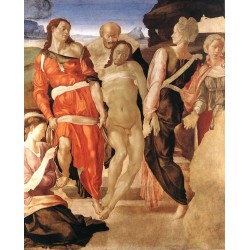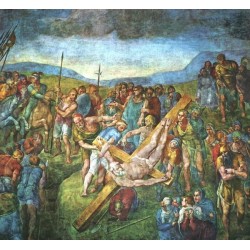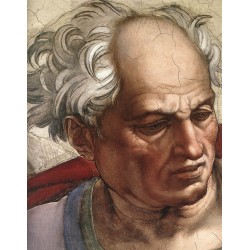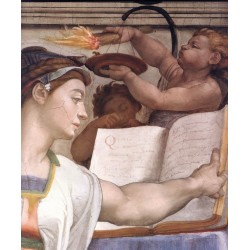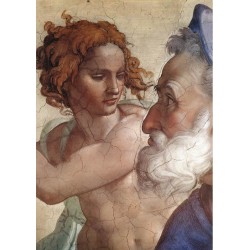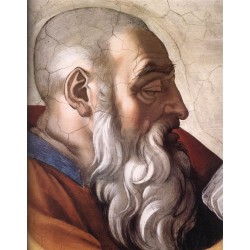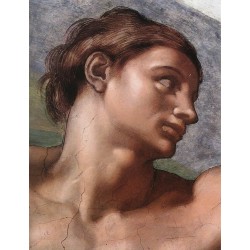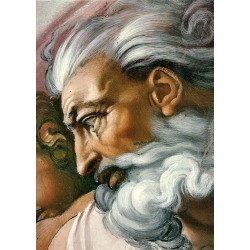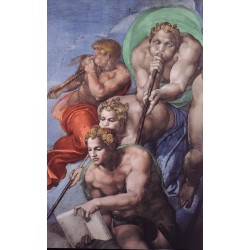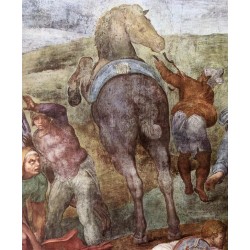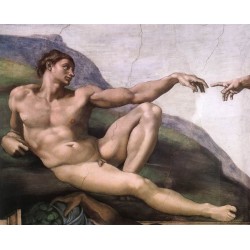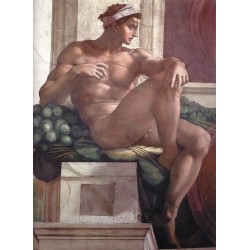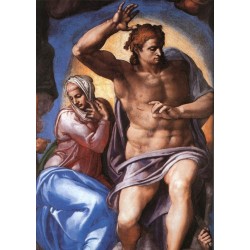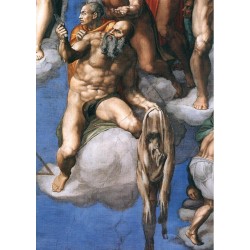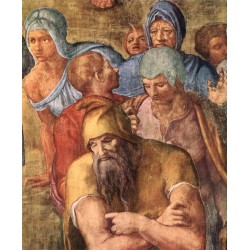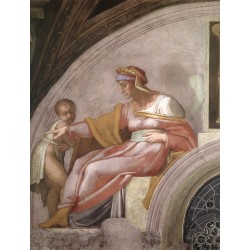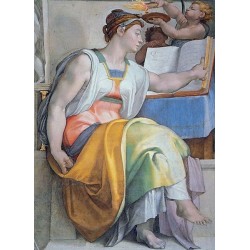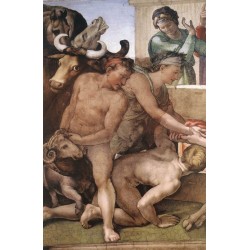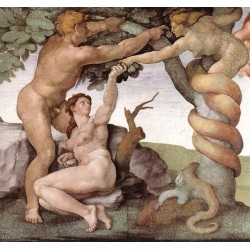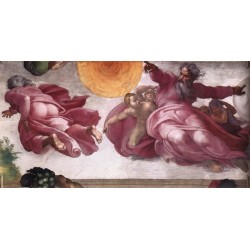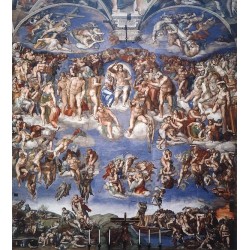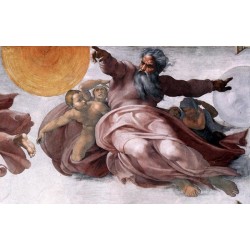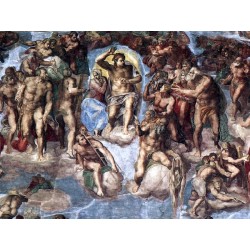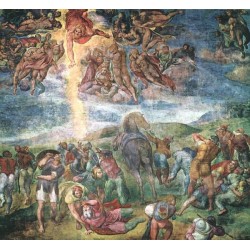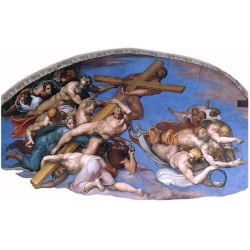Michelangelo
Michelangelo Biography
Michelangelo is wide thought to be the foremost illustrious creator of the Renaissance. Among his works are the "David" and "Pieta" statues and therefore the Sistine Chapel frescoes.
Who Was Michelangelo?
Painter, sculptor, architect and author sculpturer is taken into account one amongst the foremost gifted artists of the Renaissance, with...
Michelangelo Biography
Michelangelo is wide thought to be the foremost illustrious creator of the Renaissance. Among his works are the "David" and "Pieta" statues and therefore the Sistine Chapel frescoes.
Who Was Michelangelo?
Painter, sculptor, architect and author sculpturer is taken into account one amongst the foremost gifted artists of the Renaissance, with works as well as the "David" and "Pieta" statues and therefore the ceiling paintings of Rome's Sistine Chapel, as well as the "Last Judgment."
Born to a family of moderate suggests that within the banking business, carver became AN apprentice to a painter before finding out within the sculpture gardens of the powerful Medici family. What followed was a noteworthy career as AN creator, recognized in his own time for his creative skill.
Although he continuously thought of himself a Florentine, carver lived most of his life in Rome, wherever he died at age eighty eight.
Michelangelo's Sculptures 'Pieta'
Soon once Michelangelo's move to Rome in 1498, the cardinal Jean Bilhères First State Lagraulas, a representative of the French King Charles VIII to the pope, commissioned "Pieta," a sculpture of Virgin Mary holding the dead Good Shepherd across her lap.
Michelangelo, WHO was simply twenty five years previous at the time, finished his add but one year, and therefore the sculpture was erected within the church of the cardinal's grave. At vi feet wide and nearly as tall, the sculpture has been rapt 5 times since, to its gift place of prominence at St. Peter's Basilica in Citta del Vaticano.
Carved from one piece of Carrara marble, the thinness of the material, positions of the themes, and "movement" of the skin of the Piet — that means "pity" or "compassion" — created awe for its early spectators.
It is the sole work in reality Michelangelo’s name: Legend has it that he overheard pilgrims attribute the work to a different sculptor, thus he with boldness lapidarian his signature within the sash across Mary's chest. Today, the "Pieta" remains AN improbably revered work.
'David'
Between 1501 and 1504, carver took over a commission for a sculpture of "David," that 2 previous sculptors had antecedently tried and abandoned, and turned the 17-foot piece of marble into a dominating figure.
The strength of the statue's sinews, vulnerability of its nudity, humanity of expression and overall courageousness created the "David" a prized representative of town of Florence. Originally commissioned for the cathedral of Florence, the Florentine government instead put in the sculpture ahead of the Palazzo Vecchio. It currently lives in Florence’s Accademia Gallery.
Michelangelo's Paintings
Sistine Chapel
Pope Julius II asked carver to modify from sculpting to painting to embellish the ceiling of the Sistine Chapel, that the creator unconcealed on Oct thirty one, 1512. The project burning Michelangelo’s imagination, and therefore the original arrange for twelve apostles morphed into quite three hundred figures on the ceiling of the sacred house. (The work later had to be fully removed shortly once because of AN infectious plant within the plaster, then recreated.)
Michelangelo discharged all of his assistants, whom he deemed inept, and completed the 65-foot ceiling alone, payment endless hours on his back and guarding the project covetously till completion.
The ensuing masterpiece may be a transcendent example of artistic style art incorporating the symbology, prophecy and humanist principles of Christianity that carver had absorbed throughout his youth.
'Creation of Adam'
The vivid vignettes of Michelangelo's Sistine ceiling manufacture a toy result, with the foremost picture image being the "Creation of Adam," a illustrious portrayal of God reaching all the way down to bit the finger of man.
Rival Roman painter Raphael patently altered his vogue once seeing the work.
'Last Judgment'
Michelangelo unveiled the soaring "Last Judgment" on the way wall of the Sistine Chapel in 1541. There was an instantaneous outcry that the nude figures were inappropriate for thus holy an area, and a letter involved the destruction of the Renaissance's largest fresco.
The painter retaliated by inserting into the work new portrayals: ff his chief critic as a devil and himself because the flayed St. Bartholomew.
Architecture
Although carver continuing to sculpt and paint throughout his life, following the physical rigor of painting the Sistine Chapel he turned his focus toward design.
He continuing to figure on the grave of Julius II, that the pope had interrupted for his Sistine Chapel commission, for future many decades. carver conjointly designed the Medici Chapel and therefore the Laurentian Library — set opposite the Basilica San Lorenzo in Florence — to deal with the Medici book assortment. These buildings are thought of a turning purpose in study history.
But Michelangelo's crowning glory during this field came once he was created chief creator of St. Peter's Basilica in 1546.
When Was carver Born?
Michelangelo was born on March vi, 1475, in Caprese, Italy, the second of 5 sons.
Family, youth and Education
When carver was born, his father, carver di Buonarrota Simoni, was in brief serving as a adjudicator within the little village of Caprese. The family came to Florence once carver was still AN baby.
Indeed, carver was less inquisitive about schooling than looking the painters at close churches and drawing what he saw, per his earliest biographers (Vasari, Condivi and Varchi). it's going to are his descriptive linguistics faculty friend, Francesco Granacci, six years his senior, WHO introduced carver to painter Domenico Ghirlandaio.
Michelangelo's father completed timely that his son had no interest within the family money business, thus he united to apprentice him, at the age of thirteen, to the modern Florentine painter's workshop. There, carver was exposed to the technique of fresco.
Michelangelo & the Medicis
From 1489 to 1492, carver studied classical sculpture within the palace gardens of Florentine ruler Lorenzo the splendid of the powerful Medici family. This extraordinary chance opened to him once payment solely a year at Ghirlandaio’s workshop, at his mentor’s recommendation.
This was a fertile time for Michelangelo; his years with the family allowable him access to the social elite of Florence — permitting him to review underneath the revered sculptor Bertoldo di Giovanni and exposing him to outstanding poets, students and learned humanists.
He conjointly obtained special permission from the Catholic Church to review cadavers for insight into anatomy, although exposure to corpses had AN adverse result on his health.
These combined influences set the groundwork for what would become Michelangelo's distinctive style: a muscular exactness ANd reality combined with an nearly lyrical beauty. 2 relief sculptures that survive, "Battle of the Centaurs" and "Madonna sitting on a Step," are testaments to his distinctive talent at the tender age of sixteen.
Move to Rome
Political strife within the aftermath of Lorenzo the Magnificent’s death light-emitting diode carver to escape to Bologna, wherever he continuing his study. He came to Florence in 1495 to start work as a sculptor, modeling his vogue once masterpieces of classical antiquity.
There are many versions of AN intriguing story concerning Michelangelo's "Cupid" sculpture, that was unnaturally "aged" to check a rare antique: One version claims that carver aged the sculpture to attain an exact coat, ANd another version claims that his trader buried the sculpture (an "aging" method) before trying to pass it off as an antique.
Cardinal Riario of San Giorgio bought the "Cupid" sculpture, basic cognitive process it intrinsically, and demanded his a refund once he discovered he'd been duped. Strangely, in the end, Riario was thus affected with Michelangelo's work that he let the creator keep the money. The cardinal even invited the creator to Rome, wherever carver would live and work for the remainder of his life.
Personality
Though Michelangelo's sensible mind and copious skills earned him the regard and patronage of the rich and powerful men of Italian Republic, he had his share of detractors.
He had a contentious temperament and bad temper, that light-emitting diode to fractious relationships, typically along with his superiors. This not solely got carver into hassle, it created a pervasive discontentedness for the painter, WHO perpetually strived for perfection however was unable to compromise.
He typically fell into spells of melancholy, that were recorded in several of his literary works: "I am here in nice distress and with great physical strain, and don't have any friends of any kind, nor do i would like them; and that i don't have enough time to eat the maximum amount as I need; my joy and my sorrow/my repose are these discomforts," he once wrote.
In his youth, carver had taunted a fellow student, and received a blow on the nose that ugly him forever. Over the years, he suffered increasing infirmities from the trials of his work; in one amongst his poems, he documented the tremendous physical strain that he endured by painting the Sistine Chapel ceiling.
Political strife in his beloved Florence conjointly gnawed at him, however his most notable enmity was with fellow Florentine creator Leonardo Leonardo da Vinci, WHO was quite twenty years his senior.
Poetry and private Life
Michelangelo's poetic impulse, that had been expressed in his sculptures, paintings and design, began taking literary kind in his later years.
Although he ne'er married, carver was dedicated to a pious and noble widow named Vittoria Colonna, the topic and recipient of the many of his quite three hundred poems and sonnets. Their friendly relationship remained a good solace to carver till Colonna's death in 1547.
Was Michelangelo really Gay?
In 1532, carver developed AN attachment to a young noble, Tommaso dei Cavalieri, and wrote dozens of romantic sonnets dedicated to Cavalieri.
How Did Michelangelo actually Die?
Michelangelo died on February eighteen, 1564 — simply weeks before his 89th birthday — at his point Macel de'Corvi, Rome, following a quick sickness.
A kinsman bore his body back to Florence, wherever he was revered by the general public because the "father and master of all the humanities." He was set to rest at the Basilica di Santa Croce — his chosen place of burial.
Legacy
Unlike several artists, carver achieved fame and wealth throughout his life. He conjointly had the peculiar distinction of living to examine the publication of 2 biographies concerning his life, written by painter and Ascanio Condivi.
Appreciation of Michelangelo's creative mastery has endured for hundreds of years, and his name has become synonymous with the simplest of the Renaissance.



